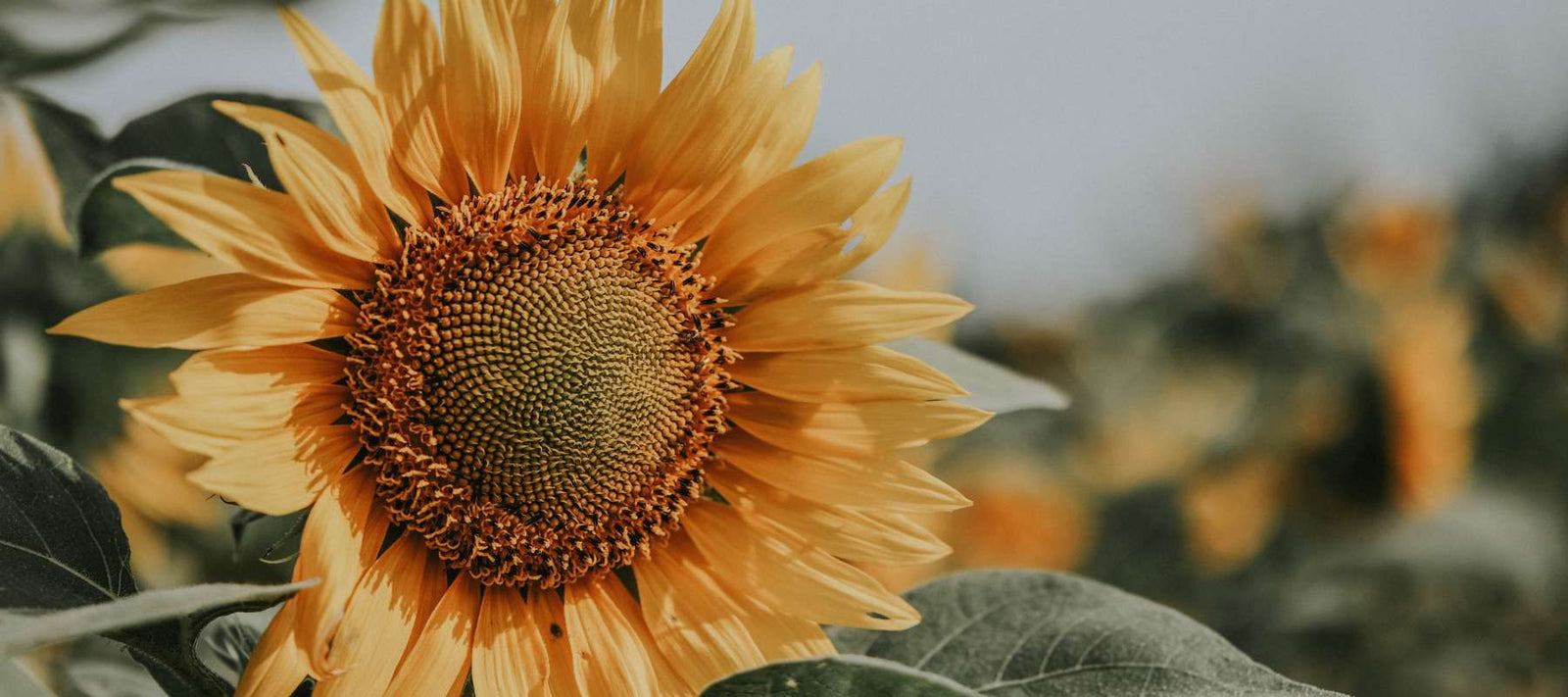Everyone loves sunflowers. They are majestic and beautiful to look at, but did you know that they provide many other benefits to your survival garden?
Benefits of Growing Sunflowers

Sunflowers have so many uses in your survival garden.
- As a Companion Plant - They are best planted along the border of your garden and can be used to provide shade for other plants that do not like full sun. Keep in mind that sunflowers produce substances that inhibit the growth of competing plants. This will keep weeds down, but it also means they aren’t good as close neighbors. Plant other plants about 3 feet away from sunflowers.
- To Attract Pollinators - Bees, butterflies, and birds love sunflowers. Studies have shown that sunflower pollen can actually help boost the health of honeybees. In addition, sunflowers attract beneficial insects like wasps and ladybugs that will help keep other unwanted insects out of your garden.
- As a Trap Crop - Sunflowers can also be used to attract pests away from vulnerable plants. Leaf-footed bugs, squash bugs, stink bugs, and aphids are attracted to sunflowers. Plant sunflowers away from vulnerable plants to keep the pests from attacking them.
- To Purify Soil - Sunflowers are a plant known for “phytoremediation” which means they have the ability to remove harmful toxins like lead and other heavy metals from soil to make it safe for planting edible plants. Sunflowers were used to clean up contaminated soil in Ukraine after the Chernobyl disaster. If you suspect you may have contaminated soil, be sure to have it tested prior to planting. Sunflowers can be an easy and organic way to improve your garden soil.
- As a Cut Flower - We are all familiar with the fields of giant yellow sunflowers, but there are many varieties that are smaller with more color that make lovely cut flowers in arrangements. Our favorites are Autumn Beauty, Chocolate Cherry, and Dwarf Sungold sunflowers.
- For Seeds - Sunflower seeds are nutritious and rich with healthy fats and anti-oxidants, particularly vitamin E. Many large fields of sunflowers are grown to harvest the seeds which are then pressed into nutritious sunflower oil for cooking. Both Mammoth and Black Russian sunflowers are prized for their seeds and the oil that can be made from them.
How to Grow Sunflowers

Sunflowers do not like their roots to be disturbed, so it is best to plant sunflower seeds directly outdoors once the soil has warmed to 60 degrees Fahrenheit. Plant seeds 1 to 1 1/2 inches deep about 6 inches apart in a very sunny spot with well-draining soil. Ideally, they should be planted in an area that is sheltered from the wind. You may want to stagger plantings 5 to 6 weeks apart for continuous blooms.
Sunflowers aren’t particularly picky about soil; however, the soil shouldn’t be too compacted to allow for their roots to easily spread out. They thrive in slightly alkaline soil. Sunflowers are heavy feeders, so make sure the soil is rich in organic matter. If it is not, you may want to add compost, manure, or a slow-release fertilizer. Taller species might need support like a bamboo stake.
Once established, water your sunflowers deeply at the root level about once a week, unless the weather is exceptionally dry or hot. In those cases, you might want to water a little more often. It’s best to water deeply and infrequently to encourage deep root growth.
Harvesting Sunflowers
If you would like to harvest sunflowers as cut flowers for bouquets, you can cut the main stem bloom just before the flower has had a chance to fully open. This will encourage the plant to create side blooms. It is best to cut the flowers early in the morning, remove all the leaves except those closest to the bloom and then cut the stem at a 45-degree angle to encourage it to absorb water. The flowers should last for about a week if provided with plenty of fresh water daily.

If you want to harvest the sunflowers for the seeds, allow the blooms to dry on the plant until the back of the flower turns brown, the leaves yellow and the petals die off. Cut off the flower about 6 inches below the bloom. Place the flower on a flat surface and rub your hand across the bloom to remove the seeds. Rinse seeds thoroughly and then spread to dry. You may need to wrap blooms in netting to prevent birds and other animals from getting to the seeds before you do.
Sunflowers are so much more than just something pretty to look at and can give you natural pest control while improving your soil as well as providing you with nutritious food and cooking oil. These are great seeds for your prepper pantry as a multi-use plant that will truly benefit your garden and your health.
























